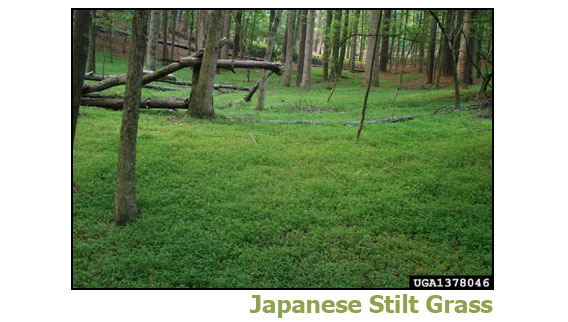

Japanese Stilt Grass
Photo credit: Chris Evans, River to River CWMA, Bugwood.org
What is it?
An annual grass that grows vigorously in low-light habitats.
Where's it from?
Asia
How did it get here?
It was first introduced into the U.S. in Tennessee around 1919 and likely escaped as a result of its use as a packing material for porcelain.
Where is it now?
It is now found throughout Virginia where it invades a diverse range of habitats, from lawns to forested wetlands.
What's the harm?
Japanese stilt grass can carpet the groundlayer and suppress other plants, including the seedlings of tree species, making it of concern to foresters. It appears that Japanese stilt grass alters soil pH, raising the acidity of soils and reducing the ability of other plants to grow where it is established. It produces numerous seed that are easily transported by animals and humans. Japanese stilt grass can establish well in a shaded forest under story, which can out-compete native flora, suppress tree seedlings and inhibit forest regeneration.
What's being done?
Agencies are keeping track of its distribution and spread, but few practical control strategies are available.
How can I learn more?
Visit https://www.invasive.org/alien/pubs/midatlantic/midatlantic.pdf.
 Virginia Invasive Species
Virginia Invasive Species